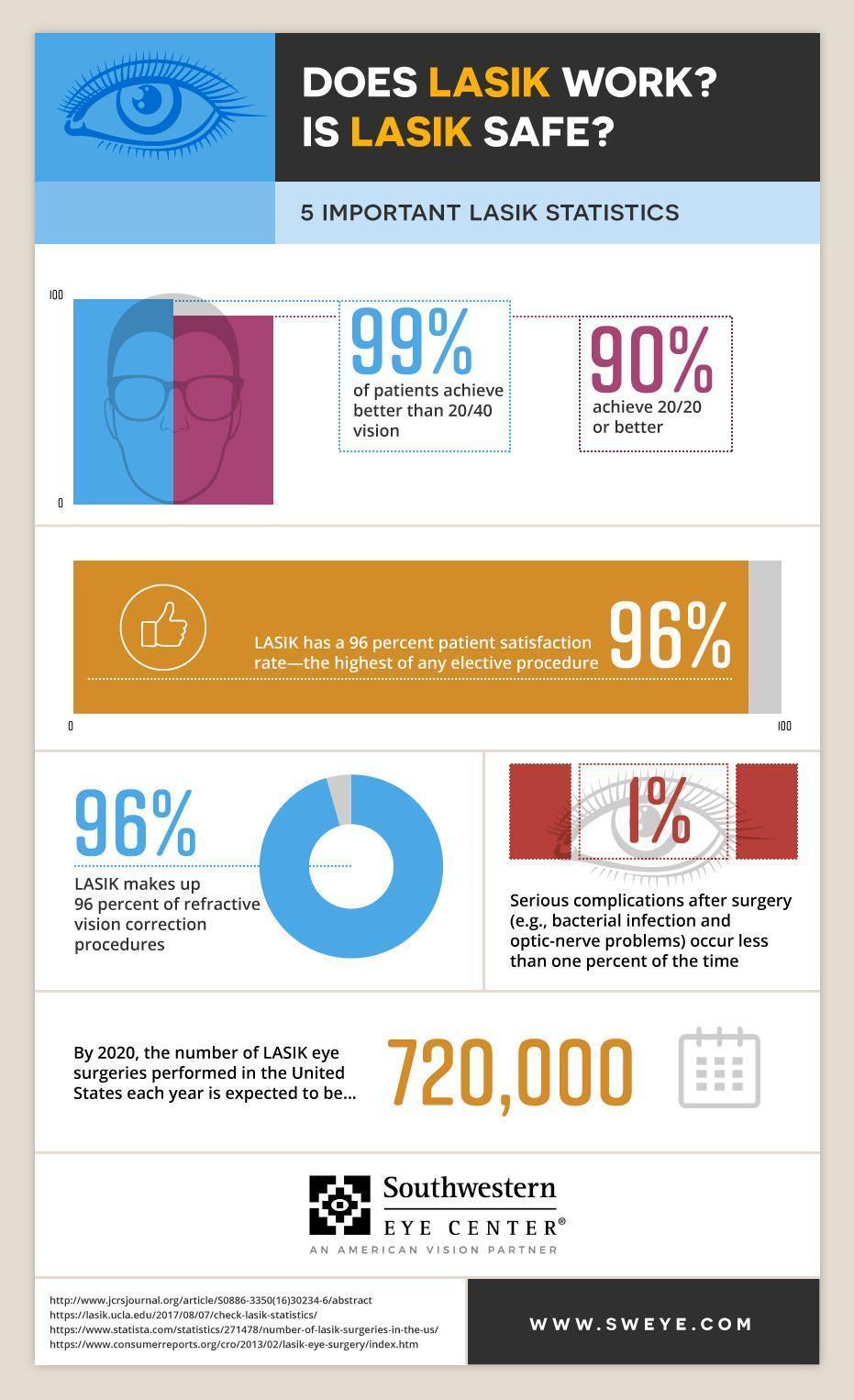What Are The Distinctions And Resemblances In Between SMILE Eye Surgical Procedure And LASIK And PRK?
What Are The Distinctions And Resemblances In Between SMILE Eye Surgical Procedure And LASIK And PRK?
Blog Article
Article Developed By-Dreyer Sander
If you've been taking into consideration SMILE eye surgical treatment, you might wonder how it compares to LASIK and PRK. Each procedure has its own collection of benefits and factors to consider. From quicker healing times to potential dangers, there are crucial distinctions you need to know prior to making a decision. Understanding these distinctions will certainly assist you make an enlightened option that aligns with your specific needs and assumptions. Interested to understand more regarding just how these procedures compare thoroughly? Continue discovering to obtain an extensive understanding of SMILE, LASIK, and PRK.
SMILE Eye Surgery Summary
If you're considering SMILE eye surgical treatment, you'll discover it to be a minimally intrusive procedure with a fast recovery time. During SMILE (Tiny Cut Lenticule Extraction), a laser is used to develop a small, precise incision in the cornea to remove a small piece of cells, improving it to correct your vision. This differs from LASIK, where a flap is created, and PRK, where the outer layer of the cornea is totally removed.
One of the vital advantages of SMILE is its minimally invasive nature, causing a faster recovery procedure and less pain post-surgery. The healing time for SMILE is reasonably fast, with several individuals experiencing boosted vision within a day or more. This makes it a prominent choice for those looking for a practical and effective vision adjustment treatment. In addition, SMILE has been shown to have a lower risk of dry eye syndrome compared to LASIK, making it a favorable alternative for individuals worried concerning this prospective side effect.
Distinctions In Between SMILE, LASIK, and PRK
When contrasting SMILE, LASIK, and PRK eye surgical treatments, it is essential to understand the unique strategies used in each procedure for vision adjustment.
SMILE (Small Cut Lenticule Extraction) is a minimally intrusive treatment that entails producing a little cut to remove a lenticule from the cornea, improving it to deal with vision.
LASIK (Laser-Assisted In Situ Keratomileusis) involves developing a thin flap on the cornea, using a laser to reshape the underlying tissue, and after that repositioning the flap.
PRK (Photorefractive Keratectomy) removes the outer layer of the cornea before improving the cells with a laser.
https://www.healthline.com/health/icl-surgery on the means the cornea is accessed and dealt with. SMILE is flapless, making it a great option for people with thin corneas or those associated with get in touch with sporting activities. LASIK supplies rapid aesthetic recuperation because of the flap development, but it might posture a greater threat of flap-related complications. PRK, although having a much longer healing period, prevents flap-related problems entirely.
Comprehending these variances is vital in picking one of the most appropriate treatment for your vision adjustment requirements.
Benefits And Drawbacks Contrast
To evaluate the benefits and downsides of SMILE, LASIK, and PRK eye surgeries, it's necessary to take into consideration the specific advantages and prospective constraints of each treatment. SMILE surgical procedure offers the benefit of a minimally invasive procedure, with a smaller incision and possibly quicker recovery time contrasted to LASIK and PRK. It also reduces the threat of dry eye post-surgery, a common adverse effects of LASIK. Nonetheless, SMILE might have constraints in dealing with higher levels of myopia or astigmatism contrasted to LASIK.
LASIK surgical procedure gives rapid aesthetic recovery and marginal pain throughout the treatment. It's highly efficient in dealing with a wide variety of refractive errors, including myopia, hyperopia, and astigmatism. Yet, LASIK carries a risk of flap complications, which can impact the corneal structure.
PRK eye surgery, while not as popular as LASIK, prevents producing a corneal flap, decreasing the risk of flap-related complications. It's suitable for individuals with thin corneas or uneven corneal surfaces. Nonetheless, PRK has a much longer healing time and might include extra pain during the healing procedure.
Conclusion
So, when it comes to picking in between SMILE, LASIK, and PRK, think of it like selecting the ideal set of shoes. SMILE resembles a smooth, comfortable set of tennis shoes - fast and easy.
LASIK is much more like trendy high heels - showy and fast, yet with some prospective risks.
PRK resembles tough treking boots - reputable and resilient, but calling for a bit more time and effort.
Eventually, the best option relies on your specific needs and preferences.
